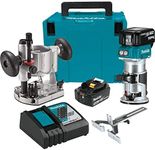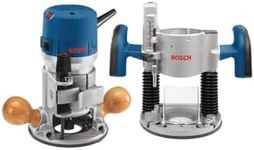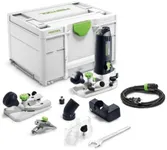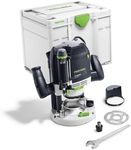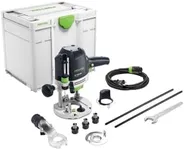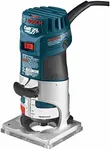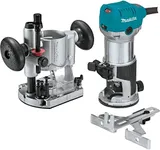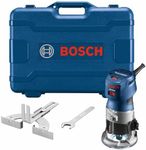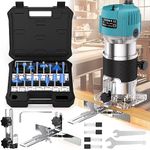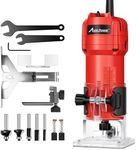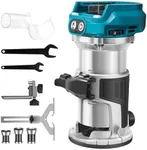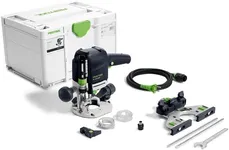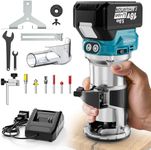Buying Guide for the Best Trim Routers
When it comes to picking a trim router, it's important to understand that this tool is essential for woodworking tasks such as trimming, edging, and cutting. A trim router is a versatile and compact tool that can help you achieve precise and clean finishes on your projects. To choose the best trim router for your needs, you should consider several key specifications that will impact its performance and suitability for your tasks.PowerPower in a trim router is measured in amps or horsepower (HP). This spec is important because it determines how efficiently the router can cut through different materials. Lower power (around 1 HP or 5-6 amps) is suitable for light-duty tasks and softwoods, while higher power (above 1.5 HP or 7-8 amps) is better for heavy-duty tasks and hardwoods. Choose a power level based on the type of materials you will be working with and the intensity of your projects.
SpeedSpeed in a trim router is measured in revolutions per minute (RPM). This spec is crucial because it affects the smoothness and precision of your cuts. Routers with variable speed settings (10,000 to 30,000 RPM) offer more versatility, allowing you to adjust the speed based on the material and the type of cut. For general use, a router with a speed range of 16,000 to 27,000 RPM is usually sufficient. If you work with a variety of materials, a variable speed router is a better choice.
Collet SizeThe collet size determines the size of the router bits you can use. Common sizes are 1/4 inch and 1/2 inch. This spec is important because it affects the range of bits available to you and the types of cuts you can make. A 1/4 inch collet is suitable for light-duty tasks and smaller bits, while a 1/2 inch collet can handle larger bits and more demanding tasks. If you need versatility, look for a router that can accommodate both sizes.
Base TypeTrim routers come with different base types, such as fixed, plunge, and tilt bases. The base type is important because it affects the router's stability and the types of cuts you can make. A fixed base is ideal for edge work and simple routing tasks, while a plunge base allows for more complex cuts and depth adjustments. A tilt base offers angled cuts. Choose a base type based on the specific tasks you plan to perform. Some routers come with interchangeable bases for added versatility.
ErgonomicsErgonomics refers to the design and comfort of the router. This spec is important because it affects how easy and comfortable the router is to use, especially during extended periods. Look for features such as a comfortable grip, lightweight design, and easy-to-reach controls. If you plan to use the router frequently or for long sessions, prioritize ergonomics to reduce fatigue and improve control.
Dust CollectionDust collection is a feature that helps manage the debris created during routing. This spec is important because it keeps your workspace clean and improves visibility while working. Some routers come with built-in dust collection systems or ports that can be connected to a vacuum. If you work in a small or enclosed space, or if you want to maintain a clean work environment, consider a router with effective dust collection capabilities.
